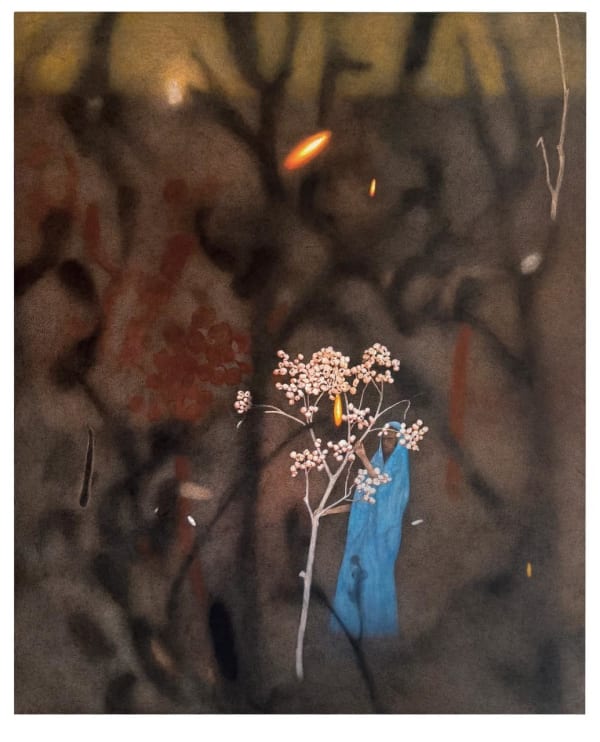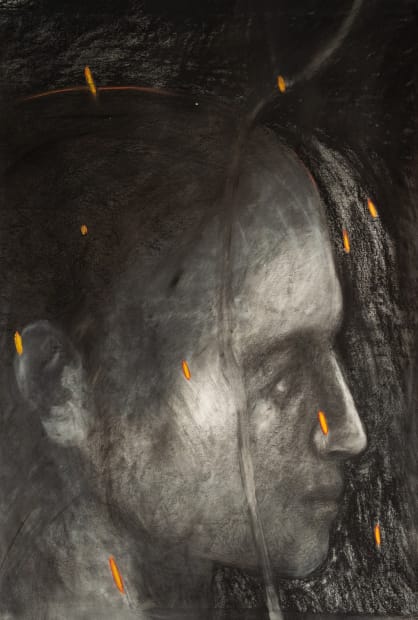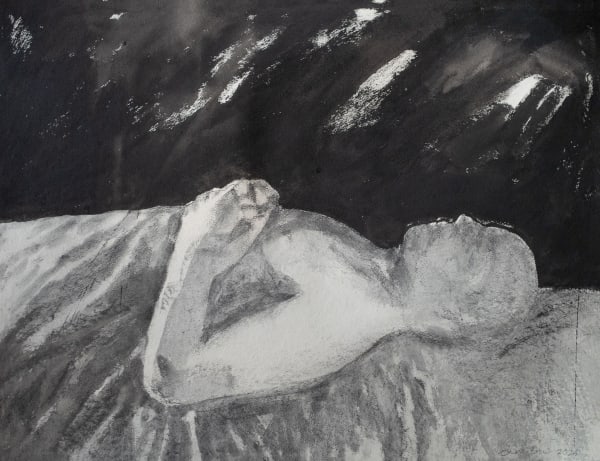-
-
Drifting into a realm of quiet reverie, emotionally resonant landscapes evoke both ecological disquiet and interior stillness in Chandra Bhattacharjee’s Hazy Existences. Rendered in spectral greys and muted hues, each scene hums with intensity, as human and nonhuman forms—birds, trees, huts, shadows—inhabiting terrains at once tranquil and strangely luminous.Bhattacharjee’s compositions act as sites of contemplation, layered with crosshatched strokes that echo the earthiness of cow-dung-smeared walls of the Santhal Tribe of Bengal, suggesting an intimacy with rural life and its well-rehearsed rhythms. Yet within this idyllic quietude lays a persistent tension: dry kindling erupts into flames, illuminating the night with their catastrophic glow; trees shimmer with an unwonted radiance; birds peer out of the canvas, vacillating between serenity and foreboding. Symbolizing both revelation and destruction, these flickers of light are not redemptive—they oscillate between beauty and ruin.
-
-

-
-
Drawing upon his childhood memories and lifelong engagement with ecological thought through painting and photography, Hazy Existences foregrounds the banality of environmental degradation and the human illusion of control over nature. It does so not through didactic imagery, but through an aesthetic that is deeply meditative, haunting, and at times, dreamlike. The result is a body of work that opens up an “in-between space” – where existence itself feels suspended in a porous, ephemeral haze.
-
Bhattacharjee chooses not to render catastrophe as spectacle. Instead, he evokes the slow, crawling violence of environmental degradation—a violence that hums beneath the surface of daily life, barely visible, yet irrevocably altering everything it touches.
The artworks in this exhibition hold a mirror to our illusions of dominion over nature, subtly challenging the anthropocentric lens through which we often view the world. The human subject, in these compositions, is not central but adjacent—one species among many, caught in a haze, whose sense of permanence is both poignant and misguided.
-
Many of Bhattacharjee's paintings prompt two simultaneous, and opposite, responses. On the one hand, we are drawn inexorably into the enigma of the image. On the other hand, we feel distanced from the action, as though it were an allegory unfolding, in cinematic terms, in mid-shot. We feel, at the same time, immersed in these paintings but also at a remove from them.
Ranjit Hoskote, Night Forest, Art Alive Gallery, 2020
-

-
-
The artworks in this exhibition hold a mirror to our illusions of dominion over nature, subtly challenging the anthropocentric lens through which we often view the world. The human subject, in these compositions, is not central but adjacent—one species among many, caught in a haze, whose sense of permanence is both poignant and misguided.
Hazy Existences: CHANDRA BHATTACHARJEE
Past viewing_room
















